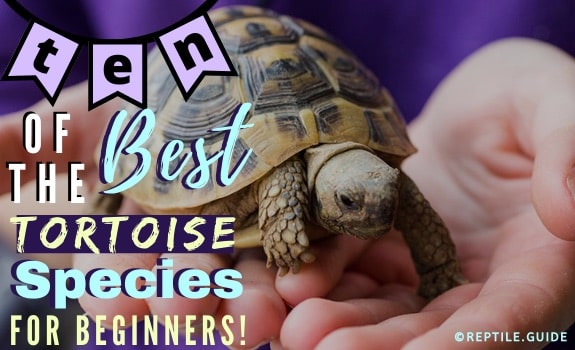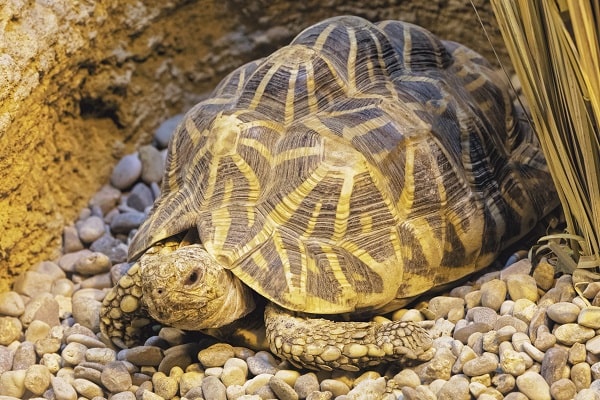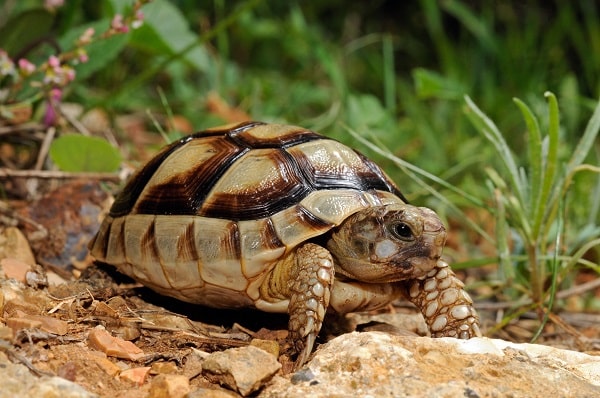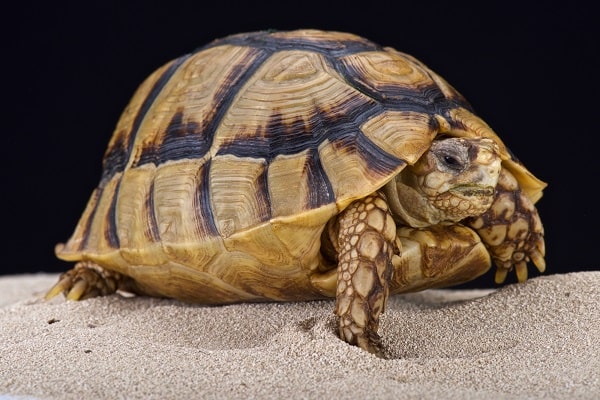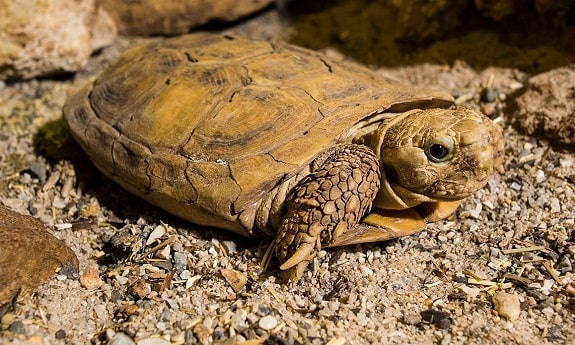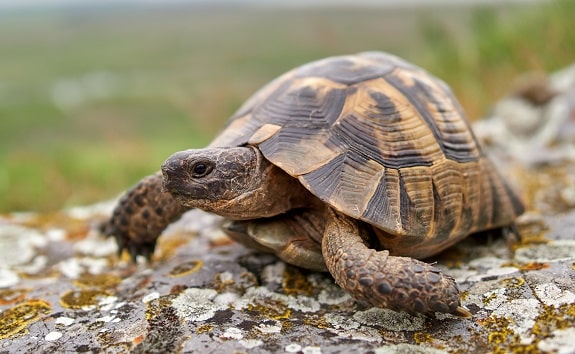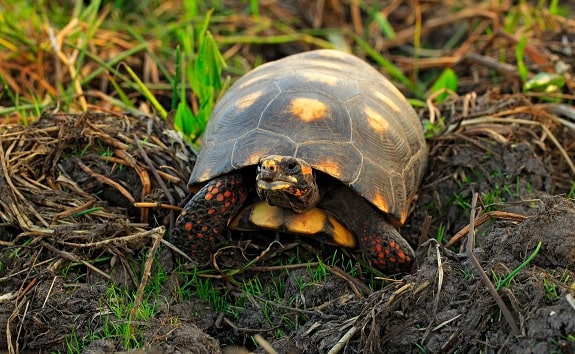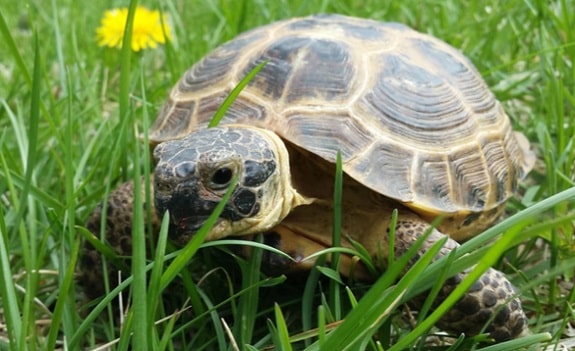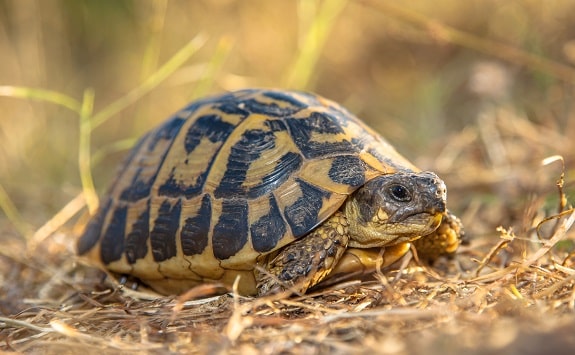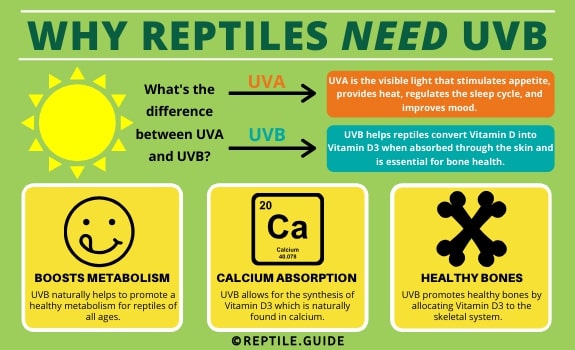Tortoises make wonderful pets for the right pet owners. However, those that are considering getting a pet tortoise must carefully consider all aspects of tortoise care before bringing home their new reptilian pet.
Similar to turtles, tortoises are often expensive to care for, especially if you live in a cooler climate where you will need to provide an indoor habitat and appropriate heating and lighting to simulate their natural environment.
Pet tortoises need a lot of space, and if you get a young tortoise their needs for space increase as they get older.
⭐️Fun Fact: Did you know, the lifespan of some tortoises can rival that of elephants, horses, lions, chimpanzees, and even catfish? It’s true! What people often don’t realize is that tortoises can live for 40 to 100 years, depending on the species!
Perhaps your current situation is ideal for owning a tortoise now, but ask yourself: How does a tortoise fit into your life at 40, 60, or even 80 years of age?
Don’t forget that not every municipality or condo board allows tortoises. Are you willing to limit any future moves because of your pet?
Ok, you’ve checked all the boxes and you are confident that tortoises are the right pet for you. Where to start?
First, you need to prioritize what you want from a tortoise and what kind of living conditions you are able to provide that will give him a high quality of life.
From there, keep reading to find the best pet tortoise species for beginner.
In This Article
10. Indian Star Tortoise
The Indian star tortoise is a medium-sized tortoise native to dry scrub forests in India, Pakistan, and Sri Lanka.
They’re named after the striking star-like design on their carapace. Their appearance attracts tortoise keepers worldwide, making them one of the MOST common species kept in captivity.
Overcollection from the wild has caused them to become a threatened species. If you decide to purchase an Indian star tortoise, it’s crucial to adopt one from a reptile rescue or buy a captive-bred hatchling from a reputable breeder.
Indian star tortoises grow to be 5 to 10 inches in length, with males being smaller, and animals originating from mainland India typically staying under 8 inches. Adult star tortoises weigh 3 to 5 pounds.
These pet tortoises thrive with a humid hot season and a dry cold season. Unlike many other tortoise species, Indian star tortoises can live in groups of multiple males and multiple females without conflict.
Another benefit offered by this beautiful tortoise is their relative inability to escape: they do NOT climb or dig, so all that’s needed is an 8-inch tall wall to provide a visual barrier.
Indian star tortoises require a high-fiber, high-calcium diet of grasses, hay, and vegetables.
9. Marginated Tortoise
Marginated tortoises are named for the marginated, saw-like scutes projecting from the back of their carapace. The rear carapace scutes of the Sardinian subspecies are somewhat less pronounced.
They are the largest European tortoise, reaching lengths up to 14 inches and weighing as much as 11 pounds.
As adults, these pet tortoises typically black or near-black with faint yellow markings.
Their native habitat is cold and dry, and they live in elevations as high as 5,200 ft. Their dark-colored shell helps them survive these harsh environments by absorbing sunlight to raise their body temperature.
Marginated tortoises hibernate to survive the frigid winter, and they’re ready to mate when they emerge in the Spring. Captive breeders have had success by mimicking these seasonal conditions.
Thanks to the harsh conditions from which they originate, marginated tortoises can comfortably live outdoors in most U.S. climates.
Outdoor enclosures allow your animal to experience natural weather variations, sunlight, food to forage for, and fresh air.
Walls should be 12 to 18 inches high off the ground and buried 6 inches deep underground to prevent escape.
The minimum enclosure size for one adult tortoise is 2 feet wide by 4 feet long.
8. Leopard Tortoise
Despite being the 4th largest tortoise species in the world, the leopard tortoise is a common pet. Their beautiful, spotted pattern resembles the big cat that they were named after and is the primary factor that led to their popularity in captivity.
They’re native to eastern and southern Africa’s dry savannas, where they forage extensively for dry grass, succulents, and thistles.
Since they reach up to 16 inches in length and weigh up to 29 pounds, they AREN’T the best candidate for indoor living. If you decide to go this route, make sure to build a large enclosure with at least 50 square feet of floor space and provide adequate heating and lighting.
Given their native range, leopard tortoises have NO tolerance for cold weather and should only be housed outdoors if the temperature is above 75ºF at night and 80ºF during the day.
Leopard tortoises aren’t inclined to digging or climbing, so a solid 18-inch tall wall should suffice.
Since they’re NOT a territorial species, it’s acceptable to house multiple individuals of both sexes together.
These pet tortoises’ diet should consist primarily of grasses and hays, supplemented with vegetables a few times a week. Fruits are acceptable as a treat only.
7. Egyptian Tortoise
The Egyptian tortoise (also known as the Kleinmann’s tortoise or the Leith’s tortoise) is native to Egypt and Libya, where they are considered critically endangered.
Thankfully, there is an established captive population. Due to their rarity, captive-bred hatchlings can be purchased to the tune of $900 or more.
This species is highly sought after as a pet because of its petite size. They’re the smallest tortoise in the Northern hemisphere, growing to be no longer than 5 inches and no more than 400 grams in weight.
Being desert-dwellers, Egyptian tortoises thrive in indoor enclosures that measure at least 2 feet long and 2 feet wide.
The enclosure needs to be kept dry, and there needs to be a temperature gradient between 75°F and 90°F.
Despite their native habitat, Egyptian pet tortoises are prone to dehydration, so they should be soaked several times a week, even when water is available for them. Humid hides and daily morning misting may also help to prevent dehydration.
Leafy greens make up the majority of a captive Egyptian tortoise’s diet. Animal protein and fruit are typically avoided.
It’s OK to occasionally offer a commercial tortoise diet, but it’s NOT considered a healthy primary food source.
6. African Sulcata Tortoises
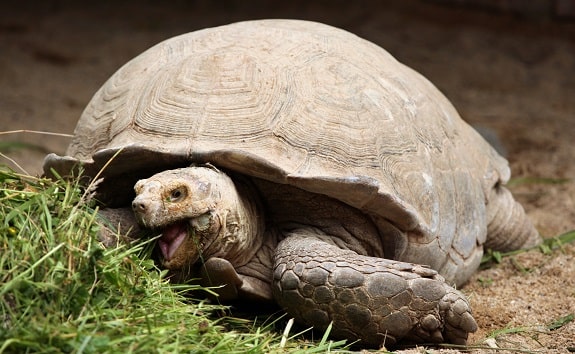
The Sulcata tortoise, also called the African spurred tortoise, is the third-largest tortoise in the world.
They tend to range from 70 to 100 lbs. but can grow up to 200 lbs. Whoa!
These pet tortoises are for dedicated tortoise lovers that want a large companion and are committed to providing a large and spacious home for them.
This means, that the Sulcata needs either a large, dedicated room in the house (a tortoise table won’t cut it) or should live with someone who lives in a dry, arid climate, allowing the tortoise to live in an outside enclosure.
Well, to put it simply…these guys sure are fun to watch and interact with!
🤓Expert Tip: Not 100% committed to the idea of owning a large tortoise? No worries! There are plenty of other options if you have your heart set on a shelled companion. In fact, there are several small turtles that make great options for first time reptile owners as well.
They love to roam and are pretty active so give them as much space as you possibly can.
They do not always show up on beginner-friendly tortoise lists but that is only because of the size of habitat, longevity, and cost of upkeep. Beyond that, they are not actually hard to care for.
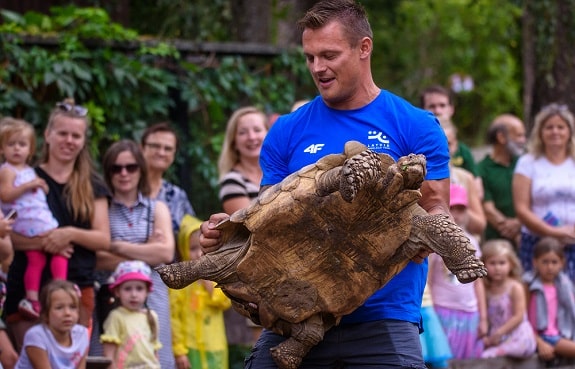
Besides being a challenge to lift, they are easy to handle as they are not snapping turtles and are unlikely to bite. They may accidentally scratch you but not if you are holding them from the sides of their shells.
Sulcata tortoises love to dig. They need to dig as doing so helps them control their temperature and makes them feel safe in their environment.
They can dig up to 30 inches deep and 10 feet long so it is necessary to provide them with both a substrate that allows them to dig and holds its shape when they burrow. The substrate must ensure that they can’t dig out of their enclosure.
These pet tortoises eat constantly. In the warmer months, they eat grass whenever it’s available and in the winter they eat grass hay.
They are considered to be lawn mowers by their owners because they like to just eat the top off the grass.
The fecal situation with reptiles can vary quite a bit and with Sulcata’s it’s much like mucking out a horse stall full of fibrous, digested vegetation. Hey, the more you know right?
Sulcata’s are considered a vulnerable species so it’s recommended that anyone wanting this tortoise species should get one from a rescue.
They take 15 years to reach maturity, so it’s often easy to get a rescued tortoise that is still young.
5. African Pancake Tortoise
The Pancake Tortoise shares several similarities to the Sulcata. The most notable being its diet. African Pancake tortoises are strictly herbivorous meaning their vegetarian diet consists of grass, plants, and some fruits.
But in terms of physical differences, the pancake tortoise is quite different from the Sulcata. In fact, It is a much smaller tortoise, weighing around one pound and growing to about 7 inches in length. They do, however, share some similarities.
While not the smallest tortoise, they are unique in other ways. They have a softer shell than most tortoises because they don’t rely on their shell for protection from predators.
Instead, they rely on their speed and the ability to squeeze into tight crevices. Their soft shell allows them to be more malleable as they protect themselves.
While the Pancake tortoise is not as long-lived as the Sulcata, they can still live over 30 years.
Like all tortoises, they are a life-long commitment. Native to Kenya, Tanzania, and Zimbabwe, they like a hot, dry habitat.
These little guys are nimble climbers so their closure needs to secure so they can’t escape.
The substrate should be thick, with some recommendations starting hatchlings in sand and then having adults in crushed oyster shell.
All tortoises thrive with time outdoors, but because of their size, the Pancake tortoise is vulnerable to neighborhood predators including cats, dog, rats, and raccoons so their sunbathing time should be limited and supervised.
These tortoises are captive-bred and are vary hardy so one you’ve decided this is the tortoise for you, you should be able to find one. However, their reproductive rates are slow because they lay fewer eggs than other tortoises so plan ahead and be prepared to wait.
4. Greek Tortoise
The Greek tortoise, also known commonly as the spur-thighed tortoise, comes largely from the Mediterranean but also parts of Europe and Africa.
They typically grow to be between five and eight inches long, though some can grow to around 10 or 11 inches, but this is not the standard.
Greek tortoises weigh between two and five pounds and are a common tortoise with several subspecies. Knowing the subspecies will help you provide the most accurate care for your tortoise.
The majority of Greek tortoises live in the wild in coastal dunes or thorny scrubs. The species type will determine the kind of temperature fluctuations they can handle.
They are captive bred in the United States, making finding a healthy one a little more reliable than other species, particularly subspecies like the Ibera or Golden Greek.
Wild-caught tortoises are considered much harder to keep than their captive-bred brethren. They actually breed quite easily and have a shorter gestation period making finding a hatchling quite easy.
Reports on the longevity of these tortoises vary with wild tortoises usually only living around 20 years but in captivity, it’s possible for them to live to 100.
These pet tortoises’ diet is a bit different from other tortoises in that they don’t graze as much.
This means the bulk of their diet does include grass and hay, but it is also based around dark, leafy greens and fibrous fruit like apples and pears.
This is great for people who prefer to make a salad for their animals and ideal for people who live in an apartment setting where they have room for a tortoise table, but not storage space for hay or a yard for grazing.
3. Red-Footed Tortoise
The Red-footed tortoise originated in South America and lives in a variety of landscapes including, grasslands, the savanna, and tropical forests. They are also found on some Caribbean islands.
These are very hardy tortoises that can live between 20 and 50 years and grow to be more than a foot long. It is easy to breed in captivity and is a common beginner tortoise.
Red-footed tortoises are busy, active land creatures who will escape any enclosure if given a chance.
To avoid this, the enclosure sides should be taller than all the tortoises you are containing when they are stacked on top of each other. Moreover, enclosures should also be 10 times as tall as the occupants with a preference to longer, narrower enclosures that allow the tortoises to really move.
This long enclosure should have gradient heat with it hotter on one side and cooler on another, allowing them to self-regulate.
These pet tortoises’ diet is much like other tortoises with special emphasis on calcium as they are estimated to be made up of half bone and half shell. Their diet should have significantly higher calcium than phosphorous ratios.
Parsley, watercress, collard and dandelion greens, celery, and kelp are all great additions to their diet.
They are usually fed an all vegetation diet, but the Smithsonian National Zoo recognizes that they eat a small amount of animal matter like invertebrates in the wild. Small amounts of fruit are permittable in their diet.
2. Russian Tortoise
The Russian tortoise is another smaller tortoise. This one is easily accessible, not because it breeds readily in captivity, but because so many are imported from the wild.
As its name implies, the Russian tortoise is native to Russia, but like so many reptiles, this tortoise has other names including the central Asian, the Afghan, the Steppe, the four-toed tortoise, and the Horsefield’s tortoise.
Now we can see that its native range is quite varying, it can actually be found not only in Russia, but also in Afghanistan, Iran, and Pakistan. Wherever it lives, it likes high elevation and often burrows and hibernates during the colder months.
The Russian tortoise lives over 40 years and is an active tortoise with a fun personality.
It’s very small, about 8 to 10 inches at maturity, and are so popular many pet stores may carry them in stock.
This is good news if instant gratification is your thing but remember to slow down and plan ahead. Don’t forget the part about how they live 40 years!
This is one tortoise that is a little more flexible when living outside, climate-wise. Their burrowing and hibernating mean they are good at protecting themselves from weather extremes.
They won’t be able to live outside in more extreme climates but can perhaps spend the summer months outside in most cases.
If housed outdoors, they need a pen that has walls at least a foot high to prevent them from climbing out. The fencing barrier should be buried six inches into the ground to prevent them from burrowing out.
Inside, a large rubber tub or glass aquarium will work just fine. Alternatively, you can build a more elaborate tank on your own. Just make sure that you give them a minimum of five square feet per pair of Russian tortoises.
1. (Western) Hermann’s Tortoise
The Hermann’s tortoise is considered the hardiest of tortoises kept indoors.
They range from four to 11 inches in length and weight less than 20 lbs.
These pet tortoises are native to the Mediterranean and have several subspecies including the Western Hermann’s tortoise, which is nicknamed the Italian tortoise – not to be mistaken with the Greek tortoise.
The Western Hermann’s tortoise is one of the smallest species available as a pet. Other subspecies are the Dalmatian and the Eastern, with the Eastern being the largest of the varieties.
Each of the tortoises on this list is great for beginners, but the Western is the most common and the Dalmatian is not an accepted subspecies in every locale.
The Hermann’s tortoise is active and not shy around humans. If you have gentle children they can be a great pet for them because of their small size.
Housing is similar to all the other tortoises. They need a large outdoor enclosure to move, dig, burrow, and hide. An inside tortoise table works where this is not possible or in the colder months.
One consideration with these tortoises is they can be aggressive with each other. This is not always true, and in some instances, male pairs or female pairs will be more aggressive.
It is good to keep tortoises with other tortoises because it is natural for them to interact with one another, but always keep in mind that they could fight so be prepared to separate them and have a second enclosure ready.
Don’t Forget the Following Basic Needs of a Pet Tortoise
Basic Need #1: UVB and UVA
A pet tortoise need both UVA and UVB light. Only in the more natural habitat, in a climate that mimics their natural environment, can you possibly get away without supplementing UV light.
Tortoises need light (combined with heat) not only to see by (especially critical in an indoor habitat), but also to metabolize their diets, and UVB light to generate vitamin D3.
Even an outdoor habitat usually needs a UVB light in the winter to allow the tortoise to continue producing D3.
Without the appropriate lighting, the tortoise will get metabolic bone disease (MBD) which is painful and often fatal.
A UVA/UVB light on a timer is enough to mitigate any problems, as long as you are meeting all their other needs.
Be sure to research your specific species to make sure you are getting the appropriate levels of lighting to meet their unique needs.
Lastly, don’t forget to change the bulbs every six months to make sure they are still getting maximum UV light.
Basic Need #2: Soaking Dish
Tortoises don’t lap up water like dogs. If you provide a water dish for drinking, they may occasionally explore it, but they are most likely going to try and lay in it.
Tortoises get most of their hydration needs through the fresh produce they consume, but they also get some moisture from soaking. Some tortoises will happily soak on their own volition several times a week.
Some owners opt to give their tortoises a bath once or twice a week.
Tortoises tend to defecate in the soaking dish, ensuring that they are having regular bowel movements, easing clean up, and allowing the owner a chance to inspect the feces to make sure they are not showing signs of illness.
Each tortoise should have their own soaking dish and they should be washed and dried in the sun to eliminate any bacterial growth. Make sure the soaking dish is shallow so the tortoise is not swimming and that he can easily enter and exit the water.
Basic Need #3: Diet
The diet of tortoises does not change significantly from species to species. They all get the bulk of their diet from grasses, typically hay or fresh grasses in the summer. This is supplemented with a salad of fresh greens several times a week.
Safe green foods for tortoises include…
- Dandelions
- Endives
- Parsley
- Arugula
- Collard and mustard greens
- Carrot tops
They can also occasionally eat carrots, zucchini, and sweet potatoes but these should not be the mainstay.
Foods you should avoid…
- Iceberg lettuce
- Peas
- Beans
- Berries
- Tomatoes
- Oranges
- Greens with high oxalic acid like spinach. This prevents calcium from being absorbed and can cause problems like kidney stones.
Commercial pelleted foods are available but should not replace their hay or fresh greens and are not necessary.
Plants that could potentially kill tortoises include…
- Ivy
- Daffodil
- Avocado
- Juniper
Make sure to read up on any plants you have in your yard or home and limit contact if necessary.
Lastly, provide a powdered calcium supplement to your tortoise to ensure they are getting the necessary calcium for a strong shell.
